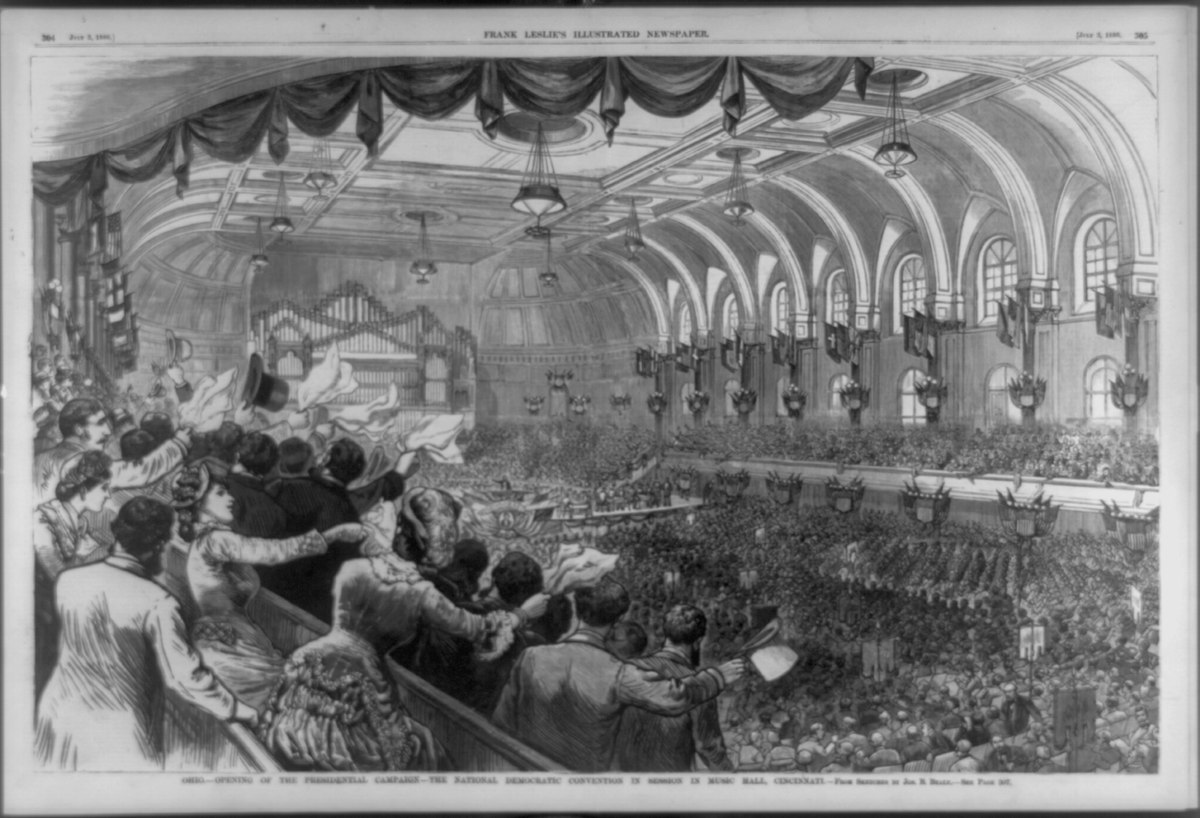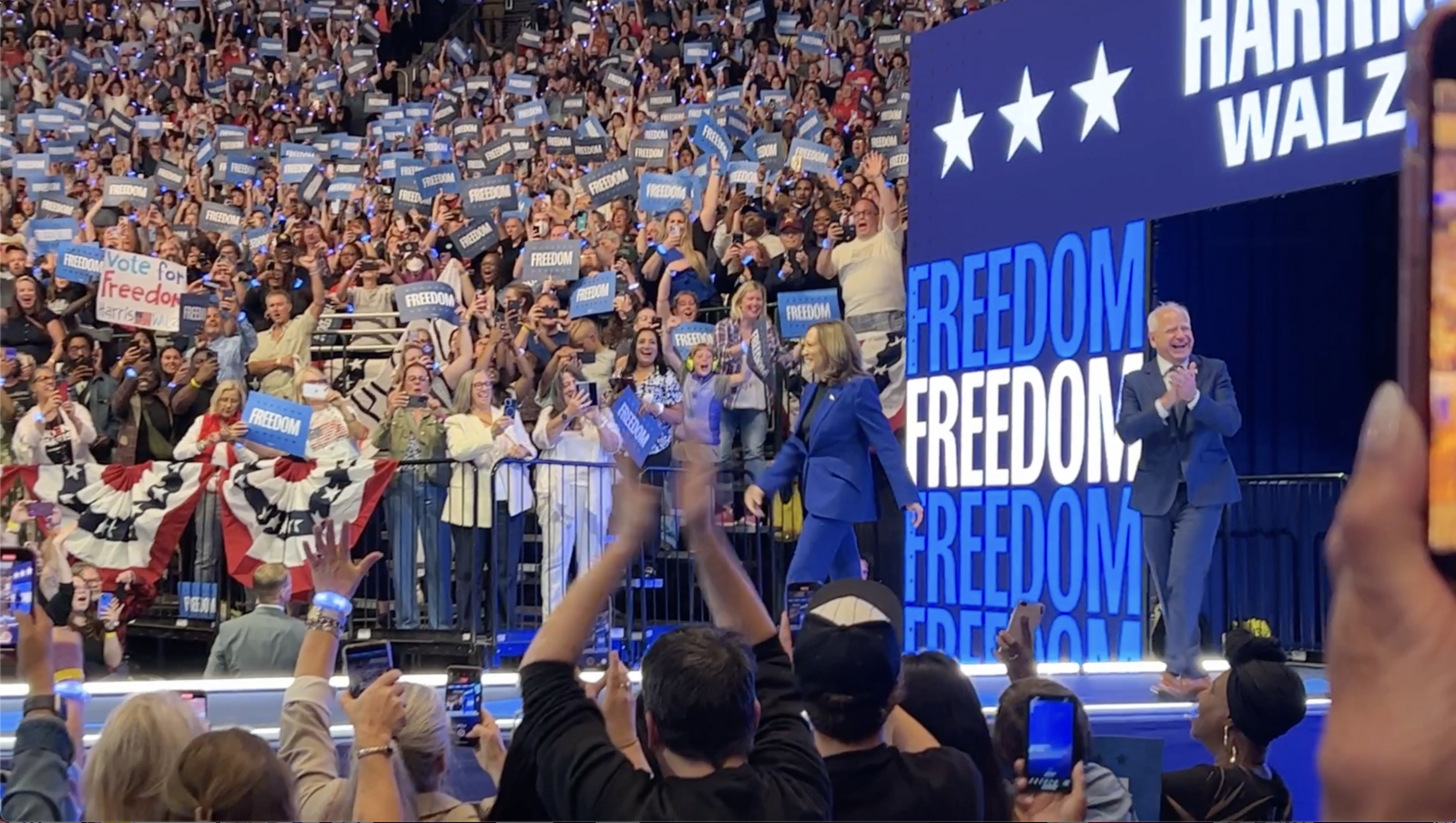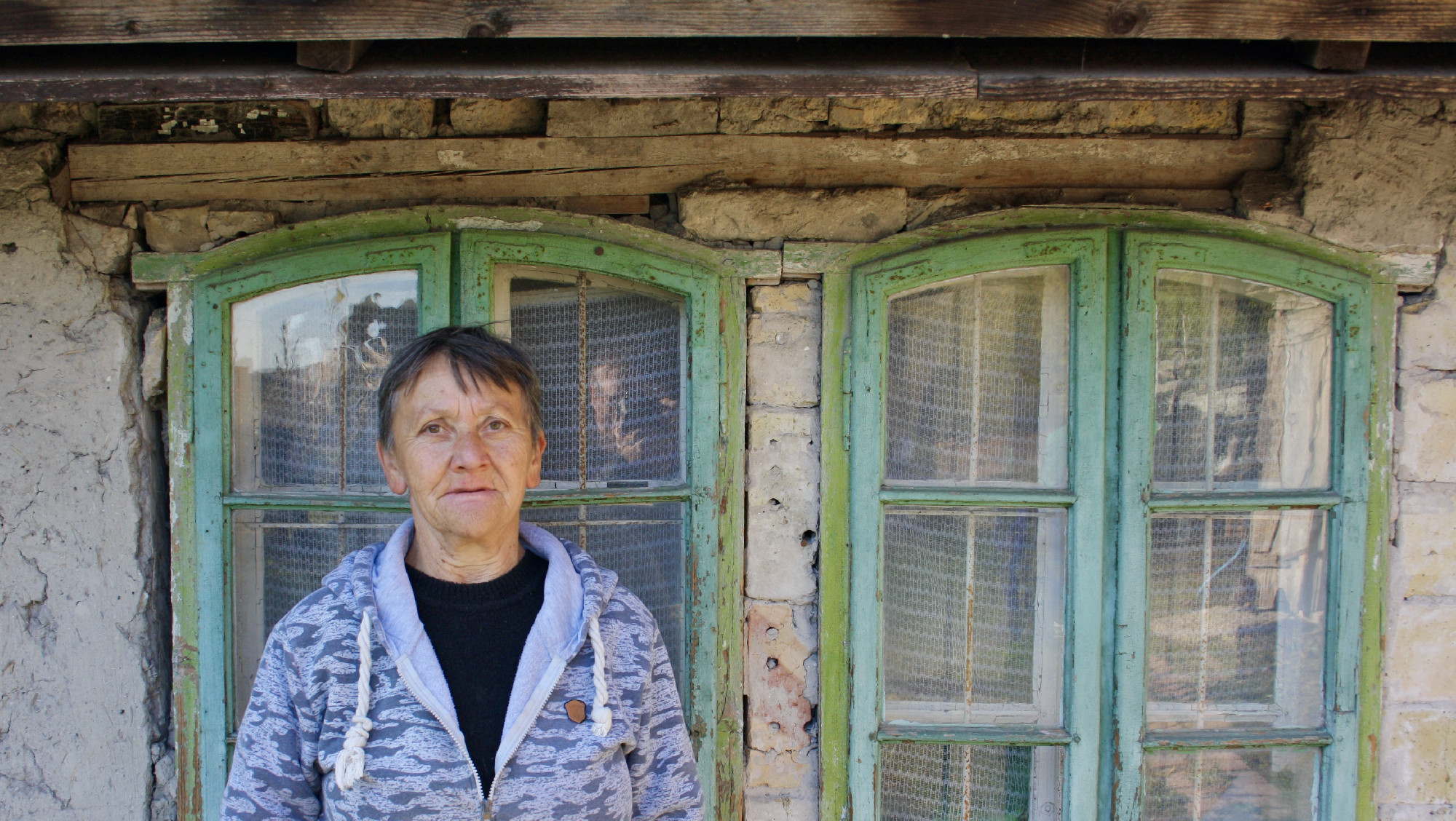The significance of the event goes far beyond formalities: with Joe Biden’s withdrawal, the Democratic campaign has seemingly ended up in a maze, but, as the radical Chicago political thinker Saul D. Alinsky put it, “in the arena of action, a threat or a crisis becomes almost a precondition to communication”, and, following his lead, the Democratic Party has found its way home in every sense of the word.

Mood as jubilant as ever – the 1880 Democratic National Convention
It is a commonplace of politics that every crisis is an opportunity. The idea that such a crisis calls for extraordinary reform or opportunistic action is traced by some to Niccolò Machiavelli, who offered solutions based on tyrannical power techniques, and by others to Alinsky, who advocated the seizure of power by radical political forces. The efficient execution of “revolutionary” breakthroughs are often driven by morally questionable philosophies of power going hand in hand with spinning stories. While this year’s election campaign has seen the Democrats spectacularly forced into an involuntary path, yet the chaotic developments of recent months have been used by the Democratic Party to engage in manoeuvres that have been promising the (overtly little-voiced) results wanted for years.
Conscious Drift
Extraordinary shocks struck American political life this year. In the spring, the strongest opposition candidate was subjected to an (unprecedented) attempt by his rivals (lawfare) to render him legally unfit to stand, while the president up for re-election was found by a special counsel to be mentally unfit to stand trial for his past mishandling of classified documents, and in the summer both were subjected to attempts to do away with them. In the case of Donald Trump it was murderous intent that, by a hair's breadth, fortunately failed—frightening to to even think of the consequences if it had not. In Biden’s case, the intention to depose was probably to everyone’s benefit: his re-election campaign was blocked by his own party elite after a spectacularly poor performance in an (unprecedentedly early) presidential debate on 27 June.
The question of President Biden’s fitness ostensibly confused the Democratic messaging machine: while some advisers and celebrities (such as David Axelrod and George Clooney) were low-key, prominent press organs and pundits, including The New York Times and the progressive social media news outlet The Young Turks, sharp in their turn against the Biden campaign. The chaos was well illustrated by MSNBC anchor Joe Scarborough’s flip-flop, but it is also rather odd that Democrats see Biden as unfit to run while calling his presidential record a success and upholding his ability to govern for the rest of his term.
The ambivalence is not by chance. Although Kamala Harris’ run in the primaries seemed unrealistic, the Democratic Party was thinking in the longer term of a younger president with her profile (as was expected by the Republican Party), if only by means of a vice-presidential succession. For years, Joe Biden was the only one up to the job. Even in 2020, the Democratic Party was looking for a figure who would present himself as a moderate liberal coveringa progressive agenda. Only Biden was able to fulfil this role for a long time, pursuing a fairly radical domestic policy while presenting himself as a centrist. In return, the party elite helped him run again, altering the primaries process accordingly and undermining the chances of other runners. When it turned out that Biden was glaringly unfit, the Democratic nomination process seemed to have run aground. Yet the party elite managed to shuffle the cards in such a way that in the person of Harris they choose a candidate who never really prevailed in a real political competition and therefore could be all the more progressive.
Schrödinger’s Candidate
The Democrats’ National Convention (and their campaign in general) shows a strange dichotomy. On the one hand, the Democratic Party is dominated by motifs of joy and hope: all the prominent figures of the party elite, from the Obamas and Clintons to Senator Bernie Sanders and Congresswoman Alexandria-Ocasio Cortez, went on stage in Chicago celebrating Harris as an agent of renewal. On the other hand, the Biden legacy could not be denied either; the party has shifted to the left in recent years, and much of its new platform is a continuation of the work of the current Biden administration.

Anti-Vietnam war protesters face the National Gaurd outside the Chicago venue of the Democratic National Convention in 1968; earlier that year, Lyndon B. Johnson had unexpectedly withdrawn from the presidential race but Hubert Humphreys, jumping for him, would be defeated by Republican Richard Nixon in November
Like Schrödinger’s cat, Kamala Harris’s ticket is ambiguous: on the one hand, as the incumbent vice-president, she wants to take credit for her performance in the administration with Democratic voters, while, on the other hand, she does not want to give Republicans a pretext to attack the Biden administration for its controversial policies. Both her being in charge of the southern border and her tie-breaking vote of the $369 billion Inflation Reduction Act are a case in point. While the US press has been inconsistent in reporting on the former, the financial impact of the latter is disputed and can be contrasted with her promise to reduce prices and inflation.
More Form and Style, Less Substance
It is no coincidence that the Democratic campaign focuses on the surface (Kamala Harris's now umpteenth introduction), while the policy elements (campaign promises) are more parsimonious, sometimes nebulous. When occasionally presented, the Democratic agenda (e.g. raising corporate tax to twenty-eight percent, food price controls, housing programmes, making Roe v. Wade federal law) is progressive rather than moderate. The (unexpected) nomination of Minnesota Governor Tim Walz, who has pursued progressive policies during the COVID pandemic and BLM protests, confirms this.
Hence, the Kamala coalition is trying to mimic the former Obama coalition, i.e. to forge a diverse alliance of different minority groups with the left wing of the party. It is noteworthy that the Convention focused on the anti-Trump alliance, systemic oppression (racism and inequality), and abortion without failing to address identity politics (the Democratic Party Platform paying tribute to indigenous peoples in North America in its very first paragraph).

Kamala Harris on the phone with Yulia Navalnaya, the widow of of the opposition leader Alexei Navalny, who died in prison in February 2024
Tempers will of course flare in the remainder of the campaign. Like the Republican, the Democratic Convention revolved around the presidential candidates; for the home side, it had to emphasize Harris’ popularity (eminently low for months) and associate Trump with the idea of an existential threat (as though he had not been subject to an assassination attempt a month and a half earlier). Their message to the electorate is that they are countering Trump, a corrupt and elderly billionaire convicted by jury, with a former Attorney General and outspoken advocate of the vulnerable in her prime. This is, of course, more form and style than anything else. It touches on substantial issues lightly. Harris is clever, conservative observers note, at least clever enough to keep her mouth shut.
So far, not unsuccessfully, she has taken the lead from his opponent in both the polls and bookmakers.
The author is a political scientist and fellow at the John Lukacs Institute, Budapest
Cover picture: Kamala Harris and Tim Walz at the Democratic National Convention in Chicago 20 August 2024




